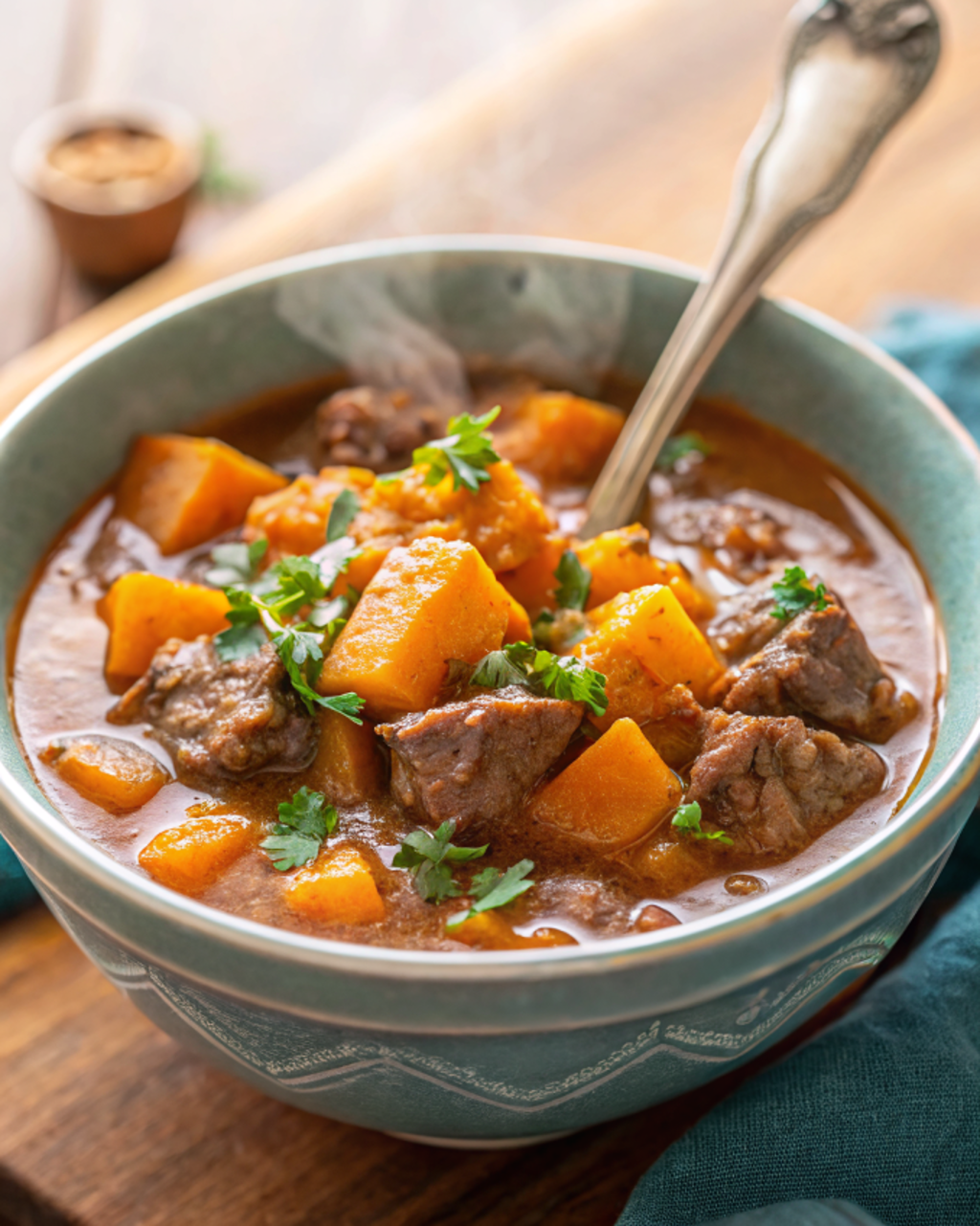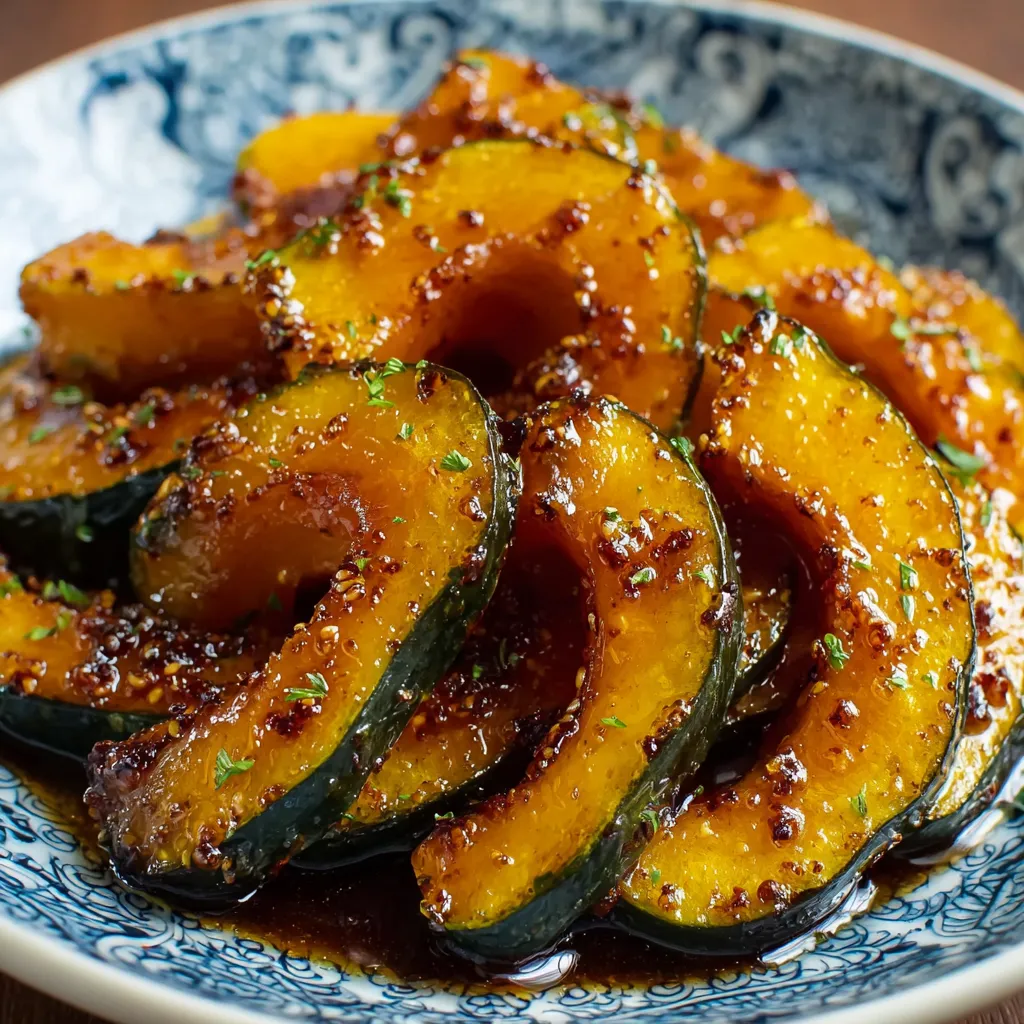This Beef and Butternut Squash Stew is the ultimate one-pot comfort food, perfect for chilly evenings and cozy family dinners. Imagine tender, melt-in-your-mouth chunks of beef simmered in a rich, savory broth brimming with sweet, earthy butternut squash, carrots, and celery. The flavors are deepened with aromatic garlic, thyme, and a hint of red wine, creating a symphony of taste that is both rustic and sophisticated.
It’s a hearty, satisfying meal that warms you from the inside out. Not only is it incredibly delicious, but it’s also packed with nutrients, making it a wholesome choice for any night of the week. Whether you’re a seasoned cook or new to the kitchen, this straightforward recipe will guide you to a perfect bowl of stew every time, filling your home with an irresistible aroma.
Table of Contents
There’s something magical about a simmering pot of stew on the stove. It evokes memories of warmth, comfort, and gatherings around the dinner table. My love for stews began in my grandmother’s kitchen, where a pot was always bubbling away during the colder months. This particular Beef and Butternut Squash Stew is a modern twist on the classic beef stew I grew up with. Adding butternut squash introduces a subtle sweetness that perfectly balances the savory richness of the beef and broth.
It’s a dish that feels both nostalgic and fresh. Creating this recipe was about capturing that feeling of pure comfort in a bowl while elevating it with seasonal ingredients that shine. It has become a fall and winter staple in my home, a reliable and beloved dish that never fails to please.
Why You’ll Love This
- Hearty & Flavorful: The combination of tender beef, sweet squash, and a rich, savory broth makes this Beef and Butternut Squash Stew incredibly satisfying.
- One-Pot Wonder: Everything cooks in a single pot, making for easy preparation and even easier cleanup.
- Nutrient-Packed: Loaded with protein from the beef and vitamins from the butternut squash and other vegetables.
- Perfect for Meal Prep: This stew tastes even better the next day and freezes beautifully for future meals.
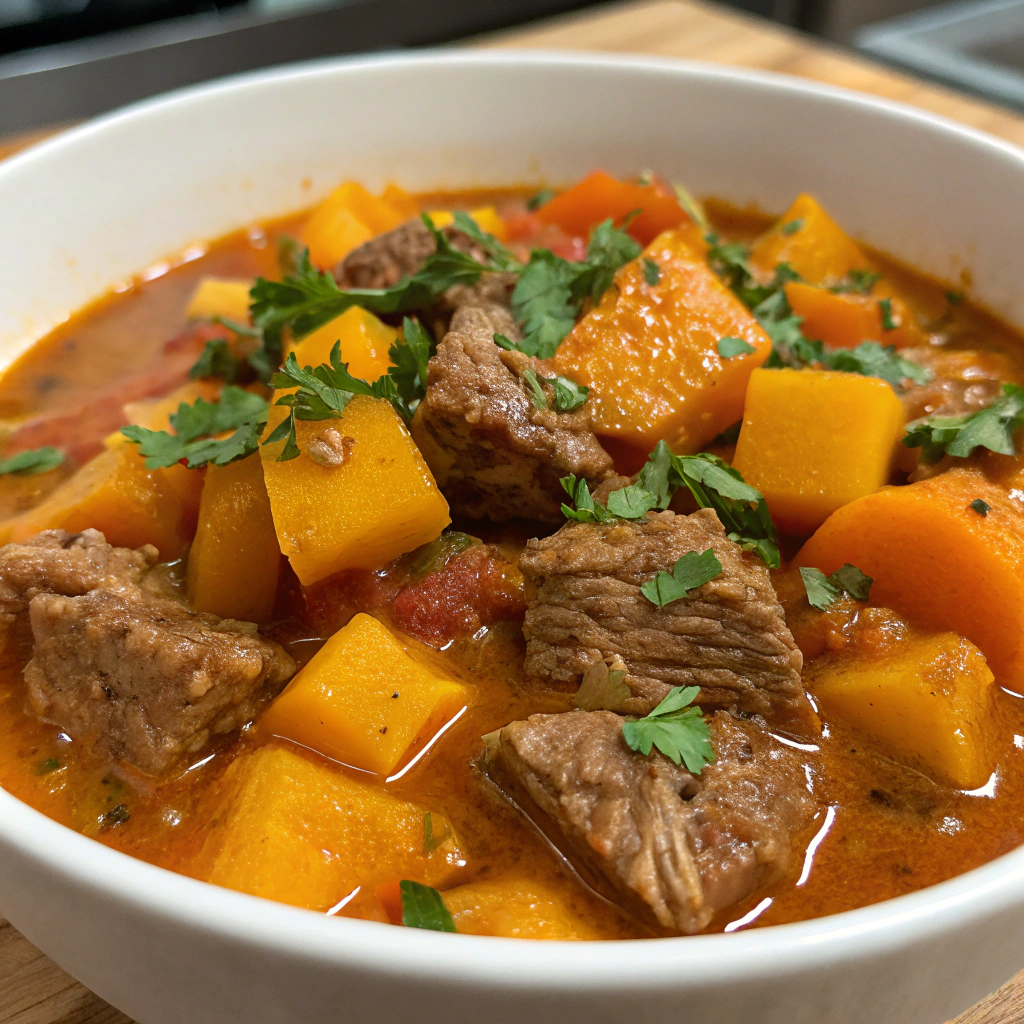
What Makes This Beef and Butternut Squash Stew Special
What truly sets this stew apart is the dynamic interplay between the savory beef and the sweet butternut squash. While traditional beef stew is purely savory, the addition of squash introduces a subtle, earthy sweetness that balances the richness of the meat and broth. The squash not only adds flavor but also contributes a wonderful, creamy texture as it cooks, slightly thickening the stew and making it even more luxurious. We use classic herbs like thyme and rosemary to tie everything together, creating a depth of flavor that feels both familiar and excitingly new. It’s a simple twist on a classic that elevates the entire dish into something truly memorable and special.
Key Ingredients for Beef and Butternut Squash Stew
- Beef Chuck: This is the ideal choice. So, what cut of beef is best for stew? Beef chuck is perfect because it’s rich in collagen and connective tissue, which breaks down during the long, slow cooking process, resulting in incredibly tender, flavorful meat.
- Butternut Squash: Provides a sweet, earthy flavor and a creamy texture that is simply divine. It’s packed with vitamins A and C.
- Aromatics: Onion, carrots, celery, and garlic form the ‘mirepoix,’ the essential flavor base for any great stew.
- Beef Broth: Use a good quality, low-sodium beef broth to control the salt level and provide a rich, savory foundation.
- Red Wine: A splash of dry red wine like Cabernet Sauvignon or Merlot helps deglaze the pan and adds a significant layer of complexity to the flavor profile.
- Herbs: Dried thyme and a bay leaf infuse the stew with classic, earthy notes that complement both the beef and squash. What herbs go well with beef and butternut squash? Rosemary and sage are also excellent choices if you want to experiment.
How to Make Beef and Butternut Squash Stew: Step-by-Step
- Sear the Beef:
- First, toss your beef cubes in seasoned flour. Searing the beef in a hot Dutch oven is crucial for building flavor. Don’t rush this step and don’t overcrowd the pan; work in batches to get a deep, brown crust on all sides.
- Sauté Vegetables:
- Cook the onions, carrots, and celery in the same pot, allowing them to soften and pick up the flavorful bits left behind by the beef. Add the garlic last to prevent it from burning.
- Build the Broth:
- Deglaze the pot with red wine, scraping the bottom to release all that concentrated flavor. Then, stir in the tomato paste, beef broth, and seasonings. Return the beef to the pot.
- Simmer Low and Slow:
- Bring the stew to a simmer, then reduce the heat to low, cover, and let it cook for at least 90 minutes. This slow cooking time is what makes the beef so tender.
- Add the Squash:
- To ensure perfect texture, you need to know how to keep butternut squash from getting mushy in stew. The secret is simple: add it during the last 30-45 minutes of cooking. This is just enough time for it to become tender and creamy without falling apart.
Storing Your Beef and Butternut Squash Stew
Storing this stew is simple, and the flavors often improve overnight as they meld together. Once the stew has cooled to room temperature, transfer it to an airtight container. It can be stored in the refrigerator for up to 4 days, making it an excellent choice for meal prepping. When you’re ready to enjoy the leftovers, gently reheat the stew in a pot on the stovetop over medium-low heat until warmed through. You can also reheat individual portions in the microwave. If the stew has thickened too much in the fridge, you can add a small splash of beef broth to thin it out to your desired consistency while reheating.
Beef and Butternut Squash Stew Variations & Substitutions
This recipe is wonderfully versatile. If you don’t have butternut squash, sweet potatoes are an excellent substitute and offer a similar sweet and earthy flavor profile. For a different flavor, try adding other root vegetables like parsnips or turnips along with the carrots. If you prefer not to use red wine, you can simply deglaze the pot with an equal amount of beef broth. For a slightly different herbal note, consider adding a pinch of sage, which pairs beautifully with squash. You can also stir in a handful of fresh spinach or kale during the last few minutes of cooking for an extra boost of nutrients and a pop of color.
Serving Suggestions for Beef and Butternut Squash Stew
This hearty Beef and Butternut Squash Stew is a complete meal in a bowl, but the right accompaniments can elevate it even further. The most classic pairing is a loaf of warm, crusty bread or fluffy dinner rolls, perfect for soaking up every last drop of the rich, savory broth. For a more substantial meal, serve the stew over a bed of creamy mashed potatoes, buttery egg noodles, or cheesy polenta. A simple side salad with a bright, acidic vinaigrette provides a fresh, crisp contrast to the richness of the stew. No matter how you serve it, this dish is sure to be a comforting and memorable meal.
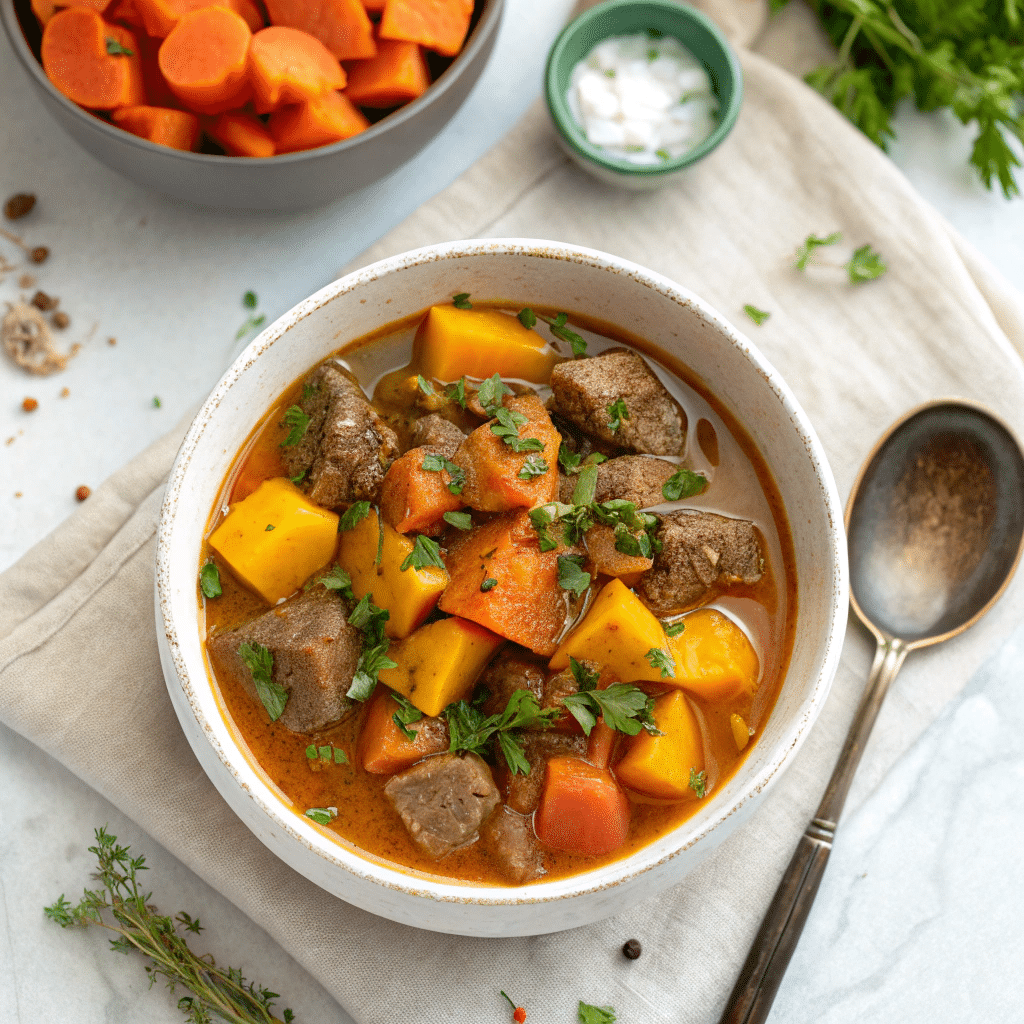
For more celebration meals, visit our special occasions page. yumytasty.com
The History of Beef Stew
Stews are one of the oldest forms of cooking, with evidence of their preparation dating back thousands of years. The concept is simple: slowly cooking tougher, less expensive cuts of meat with available vegetables in liquid until everything becomes tender and flavorful. Beef stew as we know it has deep roots in European peasant cuisine, particularly in France with dishes like ‘Boeuf Bourguignon.’ It was a practical and economical way to turn humble ingredients into a nourishing, hearty meal.
The addition of New World ingredients like potatoes became standard over time. Incorporating butternut squash is a more modern, North American twist, reflecting the continent’s love for autumn produce and adding a unique sweetness to this timeless comfort food. This Beef and Butternut Squash Stew continues that long tradition of turning simple ingredients into something truly special.
This Beef and Butternut Squash Stew is more than just a recipe; it’s a bowl of comfort, warmth, and flavor. We hope you enjoy making and sharing this dish as much as we do. It’s the perfect way to celebrate the season and create lasting memories around the dinner table. Give it a try and let us know how it turns out!
Pro Tips
- Don’t Skip the Sear: Browning the beef is the most important step for developing a deep, complex flavor.
- Low and Slow is Key: Don’t try to rush the cooking process by boiling the stew. A gentle simmer is essential for tenderizing the tough cut of beef.
- Let It Rest: Like many stews, this one tastes even better the next day. If you have time, make it a day ahead to allow the flavors to meld completely.
- Fresh Garnish: A sprinkle of fresh parsley or thyme just before serving brightens up the rich flavors of the stew.
Should you brown beef before putting it in a stew?
Can you freeze beef and butternut squash stew?
How long does this beef stew last in the fridge?
What can I substitute for butternut squash in this stew?
What can I serve with beef stew?
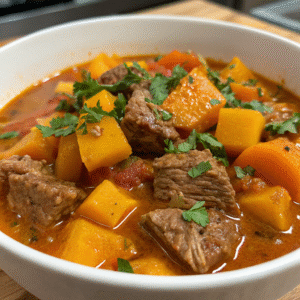
Beef and Butternut Squash Stew
Ingredients
Main Ingredients
- 2 tbsp olive oil
- 2 lbs beef chuck, cut into 1-inch cubes
- 1/4 cup all-purpose flour
- 1 tsp salt
- 1/2 tsp black pepper
- 1 large yellow onion, chopped
- 2 large carrots, peeled and sliced
- 2 celery stalks, sliced
- 4 cloves garlic, minced
- 1/2 cup dry red wine optional, can substitute with more beef broth
- 4 cups beef broth
- 2 tbsp tomato paste
- 1 tbsp Worcestershire sauce
- 1 tsp dried thyme
- 1 bay leaf
- 1 medium butternut squash, peeled, seeded, and cut into 1-inch cubes about 3 lbs
- 2 tbsp fresh parsley, chopped, for garnish
Instructions
- Prepare the Beef: In a large bowl, combine the flour, salt, and pepper. Add the beef cubes and toss to coat evenly. This not only seasons the meat but also helps create a flavorful crust and acts as a thickening agent for the stew.
- Sear the Beef: Heat the olive oil in a large Dutch oven or heavy-bottomed pot over medium-high heat. Working in batches to avoid overcrowding the pan, add the floured beef and sear on all sides until well-browned. Transfer the seared beef to a separate plate and set aside.
- Sauté the Aromatics: Reduce the heat to medium. Add the chopped onion, carrots, and celery to the same pot. Sauté for 5-7 minutes, or until the vegetables have softened. Add the minced garlic and cook for another minute until fragrant.
- Deglaze and Build the Broth: If using, pour in the red wine to deglaze the pot, scraping up any browned bits from the bottom with a wooden spoon. Let it simmer for 2 minutes to cook off the alcohol. Whisk in the tomato paste, then pour in the beef broth and Worcestershire sauce. Add the thyme and bay leaf.
- Simmer the Stew: Return the seared beef to the pot. Bring the liquid to a simmer, then reduce the heat to low, cover, and let it cook for at least 1.5 to 2 hours, or until the beef is becoming tender. The low and slow cooking process is key to breaking down the connective tissues in the beef.
- Add Butternut Squash: Add the cubed butternut squash to the pot. Stir gently, cover, and continue to simmer for another 30-45 minutes, or until both the beef and squash are fork-tender. Adding the squash later prevents it from becoming mushy.
- Final Touches and Serving: Remove the bay leaf. Taste the stew and adjust seasoning with additional salt and pepper if needed. If the stew is not as thick as you’d like, you can simmer it uncovered for a few minutes. Garnish with fresh parsley before serving hot.
Notes
- Don’t Skip the Sear: Browning the beef is the most important step for developing a deep, complex flavor.
- Low and Slow is Key: Don’t try to rush the cooking process by boiling the stew. A gentle simmer is essential for tenderizing the tough cut of beef.
- Let It Rest: Like many stews, this one tastes even better the next day. If you have time, make it a day ahead to allow the flavors to meld completely.
- Fresh Garnish: A sprinkle of fresh parsley or thyme just before serving brightens up the rich flavors of the stew.

